Oppo F7 Review: A mid-ranger meant for selfie lovers who do not want to compromise on style and performance

-
price
₹22,990.00
-
tech2 rating
3.8/5
-
user rating
3/5

The Oppo F7 starts at a price of Rs 21,990. Image: tech2/Rehan Hooda
Priced at Rs
21,990, the base variant of Oppo F7 is priced slightly higher than its
predecessor, the Oppo F5 but not by much. Oppo, however, does introduce a
number of changes on its new phone that makes it feel like an upgrade
to the F5 while holding on to its “selfie expert” tag. The key set of
changes here include a fresh design featuring a notch, an improved
processor, as well as a new AI-powered selfie camera that could beat
smartphones priced much higher when it comes to image quality.
Launching a few days after the Vivo V9
which bears almost an identical look and internals as the Oppo F7, Oppo
does have its work cut out in trying to even the competition. But
whether the F7 actually commands the price that Oppo has set for the
phone, or does it pale in comparison to lower-priced options is
something we need to find out and so we begin.Build and Design: 7.5/10
While we all have our reservations about the “notch” which seems to be coming to more and more smartphones these days, there is no denying that it is here to stay, at least till there is a better place to hide the front-facing camera and other sensors. The Oppo F7 also gets a notch, which changes the overall look of the phone drastically.
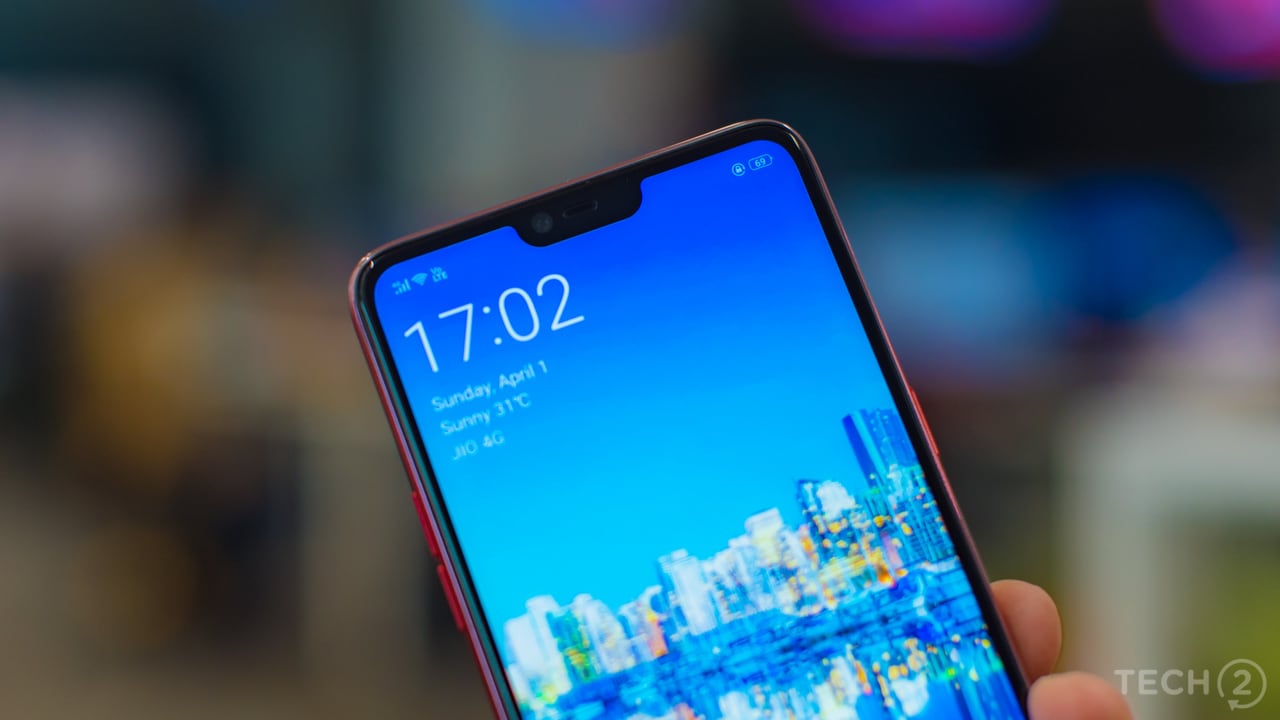
The notch on the Oppo F7 is smaller than that on the Apple iPhone X. Image: tech2/ Rehan Hooda
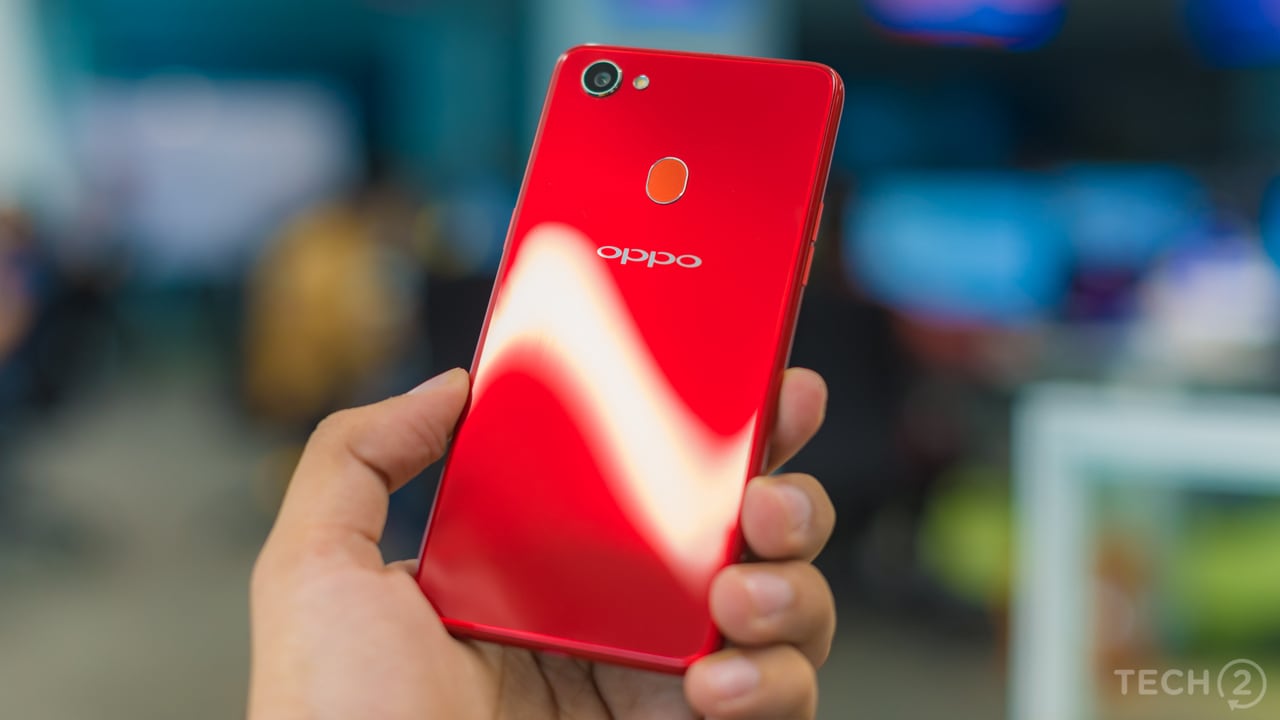
The back of the phone features a glossy glass finish. Image: tech2/ Rehan Hooda
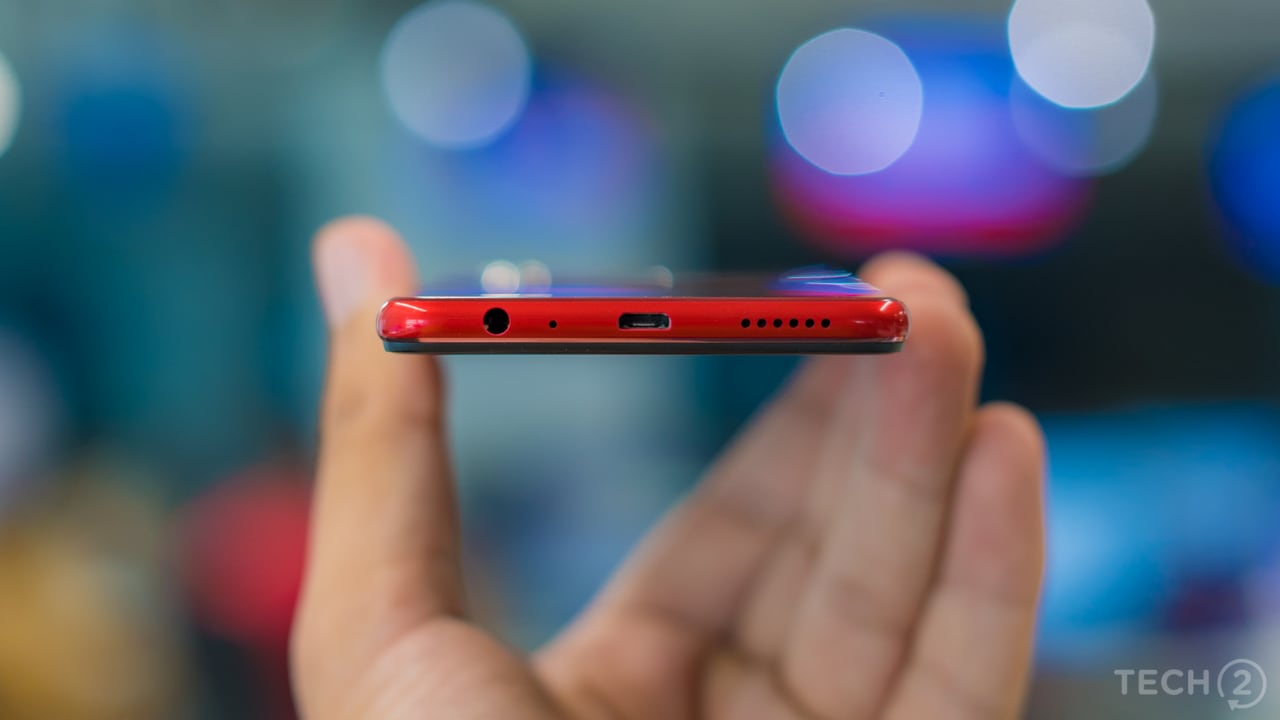
On the bottom, we get a micro USB port followed by a 3.5 mm headphone jack and the speaker grille. Image: tech2/ Rehan Hooda
Features: 7.5/10
In terms of features, the Oppo F7 sports a 6.23-inch FullHD+ display with an aspect ratio of 19:9 and a resolution of 1080 x 2280 pixels. Oppo has also thrown in a full-screen gesture support which works similar to that on the iPhone X.
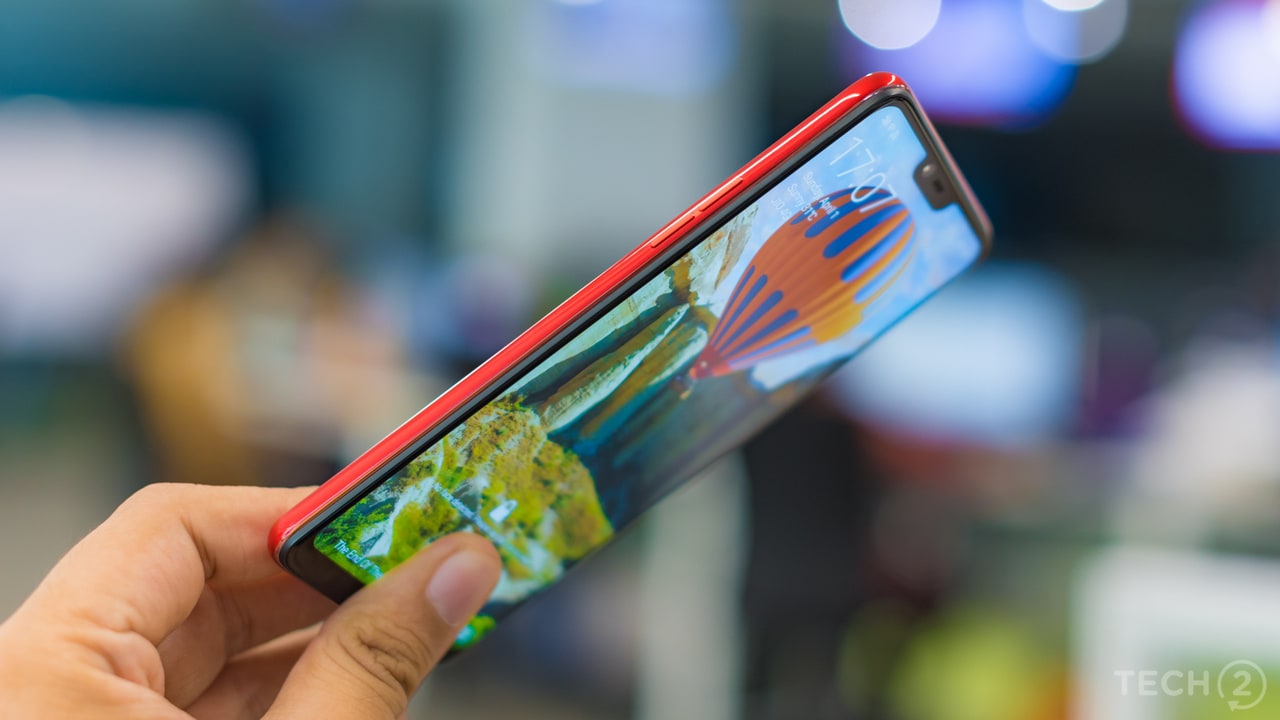
On the left of the phone you find the volume rockers. Image: tech2/ Rehan Hooda
The base variant phone comes with 4 GB of RAM and 64 GB of onboard storage and there is a higher-end version with 6 GB RAM and 128 GB storage. Both phones have the option to expand the storage using the microSD card slot.

The Oppo F7 is packed with features such as Face Unlock and full-screen gestures. Image: tech2/ Rehan Hooda
On the software front, the Oppo F7 runs on the company's ColorOS 5.0 built atop Android Oreo 8.1. There is also a rear-facing fingerprint sensor and connectivity options such as 4G VoLTE, Wi-Fi, Bluetooth and GPS/A-GPS. The phone also features a 3,400 mAh battery.
Display: 7.5/10
As mentioned before, the Oppo F7 embraces the notch and that could immediately set you off if you hated it before, but this was the first device with a notch that I had personally used and I got over it after a day.
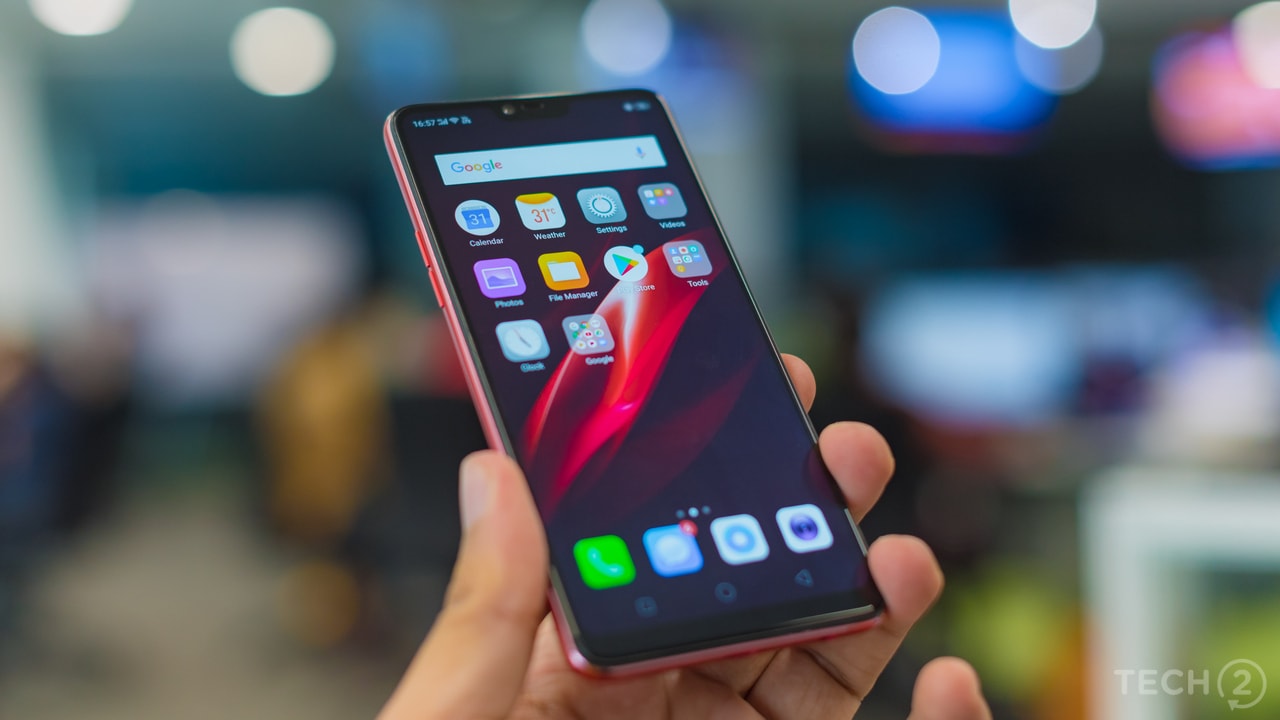
The 6.23-inch display on the F7 features a rather odd aspect ratio of 19:9. Image: tech2/ Rehan Hooda
Oppo does like the display to show slightly cooler colours but you can go ahead and tweak that up to a certain point in the setting menu, to your preference. Colours are vibrant and true to life, unlike saturated AMOLED displays which would be a plus for those who prefer more accurate colours. The display is also sharp at 421 ppi, making the display convenient for reading text as well.
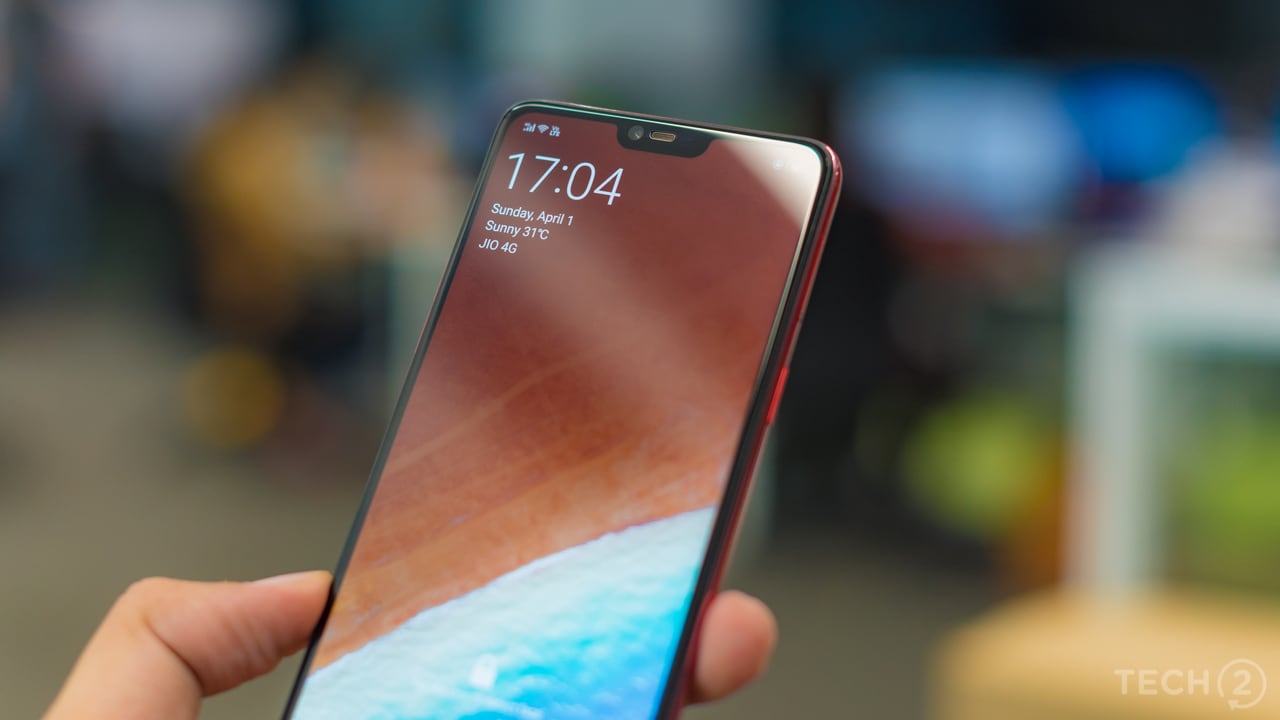
The overall brightness of the panel on the Oppo F7 was a tad disappointing. Image: tech2/ Rehan Hooda
Software: 8/10
Oppo’s ColorOS interface has always been similar to iOS and ColorOS 5.0 is no different. Having tried out Oppo’s lacklustre ColorOS 3.2 on its budget-oriented A83 smartphone about a month back, I was amused to see a ton of issues to be solved on the flagship F7 which now runs on the latest version of Android Oreo.
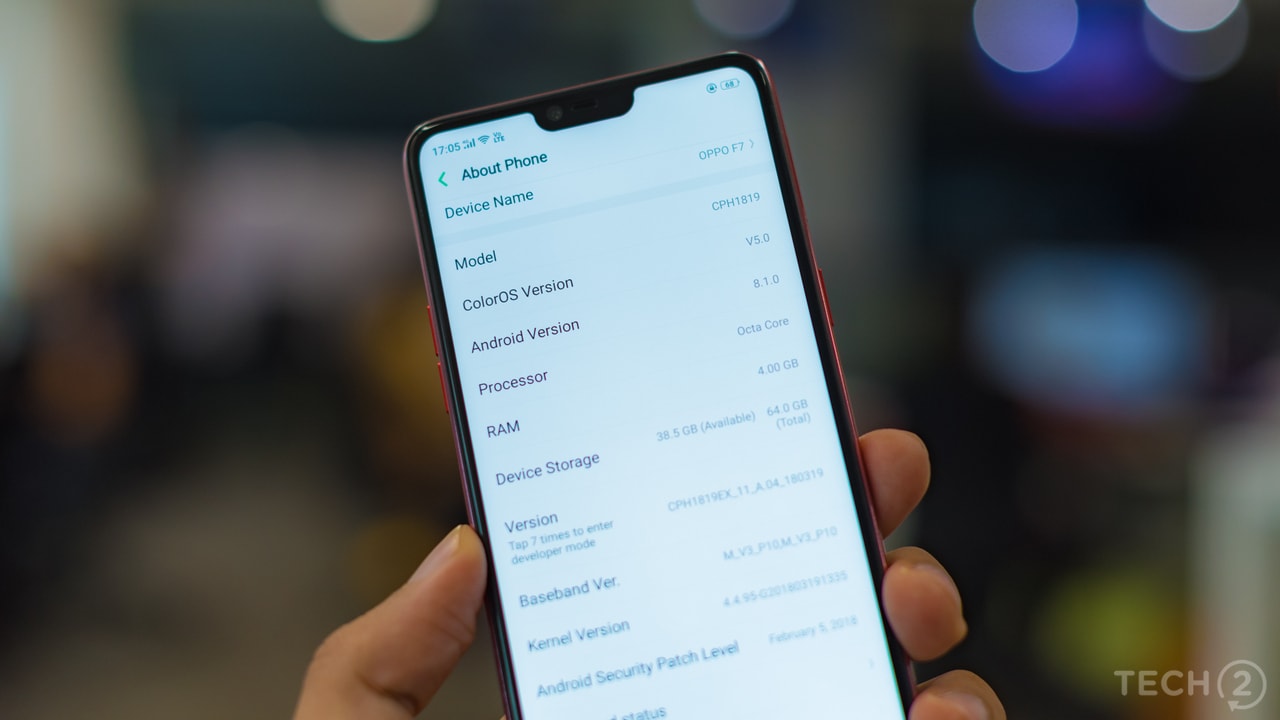
The Oppo F7 runs its own skinned version of Android Oreo 8.1 called ColorOS 5.0. Image: tech2/ Rehan Hooda
You also get most of the features baked into Android Oreo-like long-press quick actions, quick switching. In a bid to try and please iPhone users, ColorOS also brings features from iOS such as full-screen gesture support. Now, full-screen gestures were a part of ColorOS 3.2 as well but it was more of a half-baked feature rather than a usable one. That seems to have changed on the Oppo F7.
You also get a widget drawer on swiping left which is reminiscent of the drawer we see on iOS and also on Xiaomi’s MIUI 9. Oppo has also added a game acceleration mode which allows you to run games smoother and with fewer disturbances. Another feature I found myself using was the smart drawer while playing games. This allows you to access WhatsApp, Messenger and a couple of shortcuts such as a screen-recording button and a screenshot button. The smart drawer is tucked towards the side and does not become obtrusive while playing, which I found to be a neat implementation.
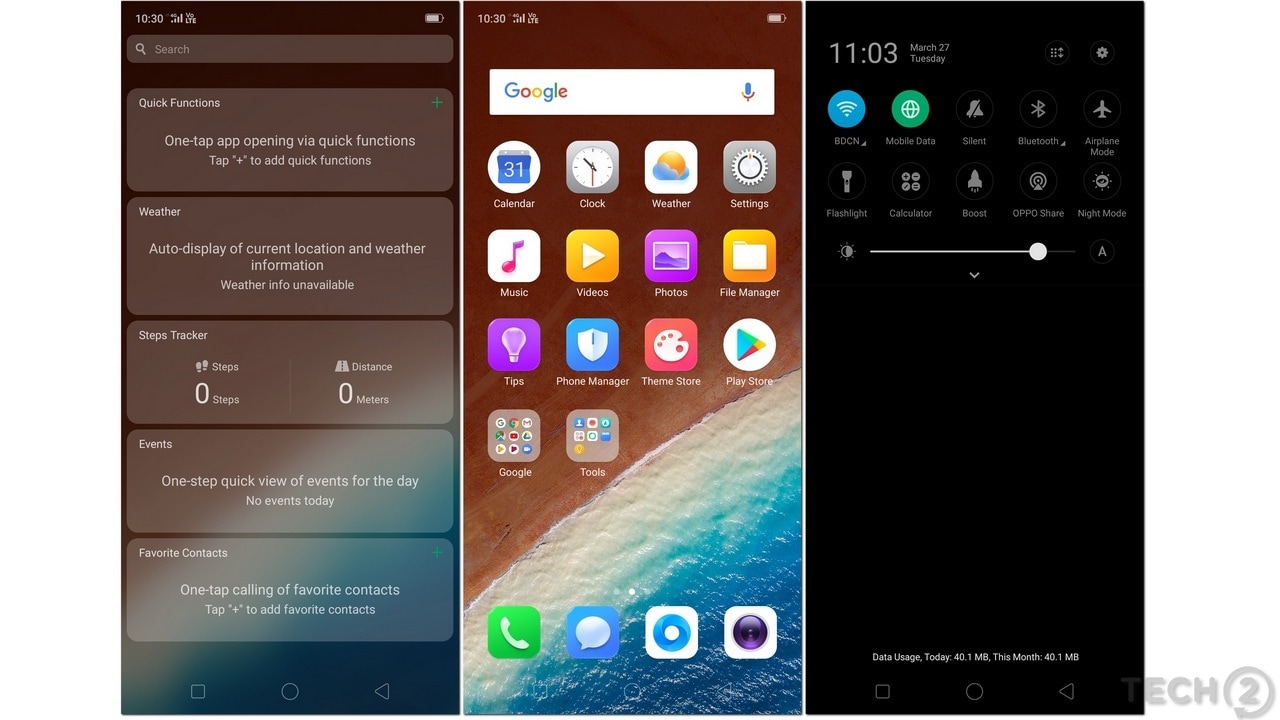
You also get a full-fledged Theme store as well as a Wallpaper Store for those who love customising their phones. Another key addition is Oppo’s new facial unlocking system which is very quick. It certainly is not as secure as Face ID or Samsung’s Iris Scanner but it does add a level of convenience if you wish not to use the fingerprint scanner.
There is only one small issue that I found irritating and that is the inability to swipe away notifications. ColorOS 5.0 requires a two-step process to clear notifications which I’m sure was unnecessary and pointless at the same time.
Performance: 8/10
While the Oppo F7 is a camera-oriented smartphone, it is certainly no slouch in terms of overall performance. While general browsing and usual day to day tasks were handled by the F7 with relative ease, it also turned out to handle gaming quite well. This can mostly be attributed to the MediaTek Helio P60 chipset that the phone features.
What Oppo completely left out of their product presentation and surprisingly so was that the F7 uses MediaTek’s newest octa-core Helio P60 chipset. This chipset is built using the 12 nm FinFET fabrication process is also the first chipset platform featuring a multi-core AI processing unit. What this translates to is that the processor is built to power AI applications and at the same time bring features from higher-end chipsets like deep-learning facial detection, object and scene identification and smarter camera functions to mid-ranged devices like the Oppo F7.

Lighter titles like Badlands 2 runs smooth as butter on the Oppo F7. Image: tech2/ Rehan Hooda
I played demanding titles like Asphalt 8: Airborne, Dead Trigger 2 and Need for Speed: No Limits on the phone for extended periods without little to no hiccups at all. Temperatures were also well within normal limits.
As for audio quality, the single bottom firing speak is loud but being a mono setup, it can easily be blocked off while watching a video or playing games. Call reception and call quality on a VoLTE network were excellent and so was the audio from the 3.5 mm headphone jack of the Oppo F7.
Camera: 7.5/10
If you are considering getting the Oppo F7 then you are certainly a person who cares about taking a lot of selfies and photographs on your smartphone. On paper, the Oppo F7 features a single 16 MP f/1.8 sensor on the back of the phone and a 25 MP f/2.0 sensor on the front for selfies and video calls. While that sounds utterly unimpressive, AI does play a major role in adding a bit of value to what the phone seems to lack in terms of hardware.

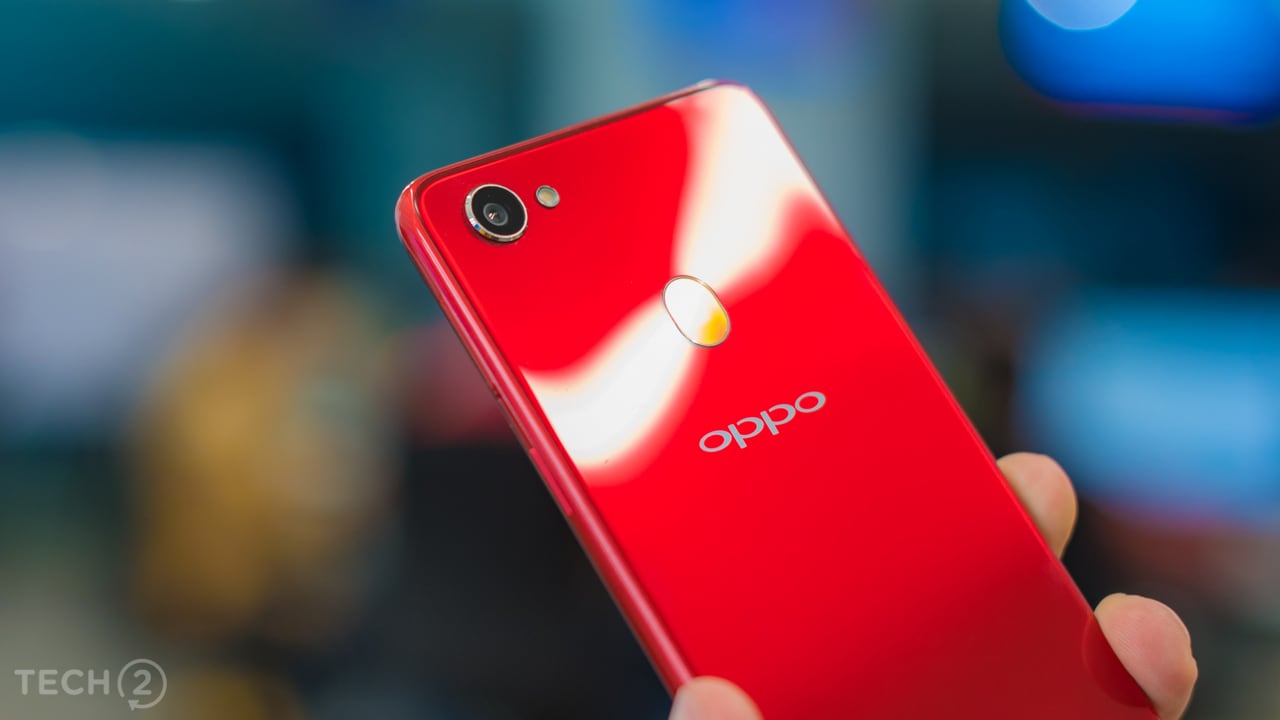
- The F7 features a single 16 MP f/1.8 lens on the back. Image: tech2/ Rehan Hooda
The Helio P60 powered camera is also capable of real-time HDR while clicking selfies and later learns how to edit your images based on your general editing history. The camera app comes with a number of regular modes including — time-lapse, video, sticker, panorama and expert.

As for results, you do get very pleasing images with both the front and the rear camera. The AI Scene Recognition actually seemed to make a difference in my testing and the images turned out to be much more pleasing than it actually should have been. What I mean is that the camera does a lot of post-processing to make the images look more vibrant and what it feels is more pleasing to the eye. This would appeal to most who intend to click a selfie and post it on Instagram, but not so much for someone who wishes to further play around with the raw image.
You can check out the images and videos I shot with the phone here.

The camera also has a tendency to apply an HDR-ish filter on the phone which is not always likeable. As for the selfies, the need to always make the subject look fairer seems to be a real issue. Dusky-coloured skin tones here look creepy and the over-smoothening beautifier just makes it worse. Portrait mode is also a hit and miss on most occasions.
As for low light shots, the images shot were soft and almost unusable but it did get better when there was adequate artificial lighting. Oppo does throw in a full Pro mode called "Expert" mode which does allow manual control over most of the settings, making night shots which are less noisy. Video, however, is unimpressive due to the lack of any stabilisation. The F7 can shoot at a maximum resolution of 1080p at 30 fps through both front and rear cameras but quality here really takes a hit.
Battery Life: 8/10
With the Helio P60 SoC powering the Oppo F7, the 3,400 mAh battery seemed to perform well under daily and heavy usage conditions.
Using it as my daily driver, I saw the F7 deliver a day's worth of battery life with 30-36 percent battery to spare, depending on usage. My usage included, the usual WhatsApp, Instagram, Telegram, two email accounts on separate applications, streaming an hour or two of music and video streaming, about an hour of calling and about an hour of gaming each day.
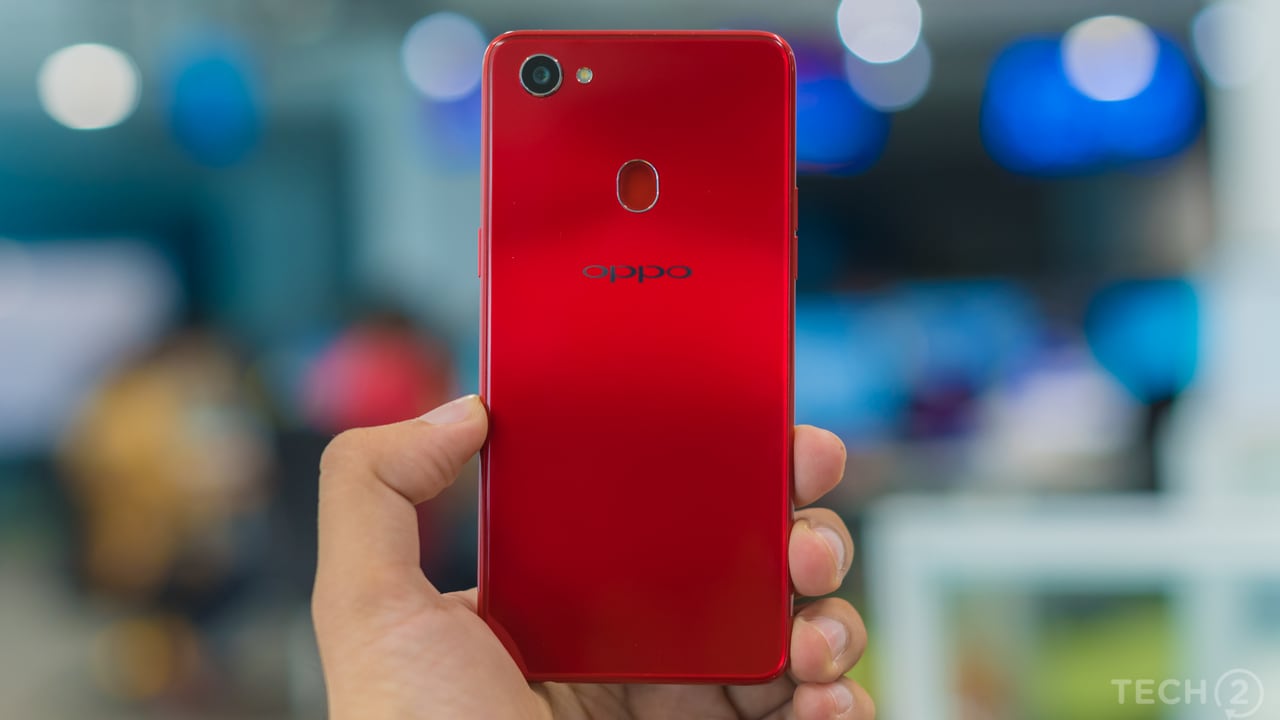
The F7 comes with a fairly large 3,400 mAh battery unit. Image: tech2/ Rehan Hooda
Verdict and Price in India
The Oppo F7, at first sight, might easily strike you as just another Oppo smartphone which just looks premium because of the notch. But Oppo’s F series, being its flagship lineup certainly does more justice to the brand trying to merge a superlative selfie experience while being an equally capable daily-use phone.

The F7 faces competition from the Vivo V9 and the Moto X4 in its price range. Image: tech2/ Rehan Hooda
At a price of Rs 21,990, it is Rs 1,000 cheaper than the Vivo V9 and the Moto X4, offering a comparable performance overall. It does hence boil down to personal preference, but if taking selfies while having a stylish looking device which does not break the bank is what you are looking for, then the Oppo F7 is definitely a serious contender
Commentaires
Enregistrer un commentaire